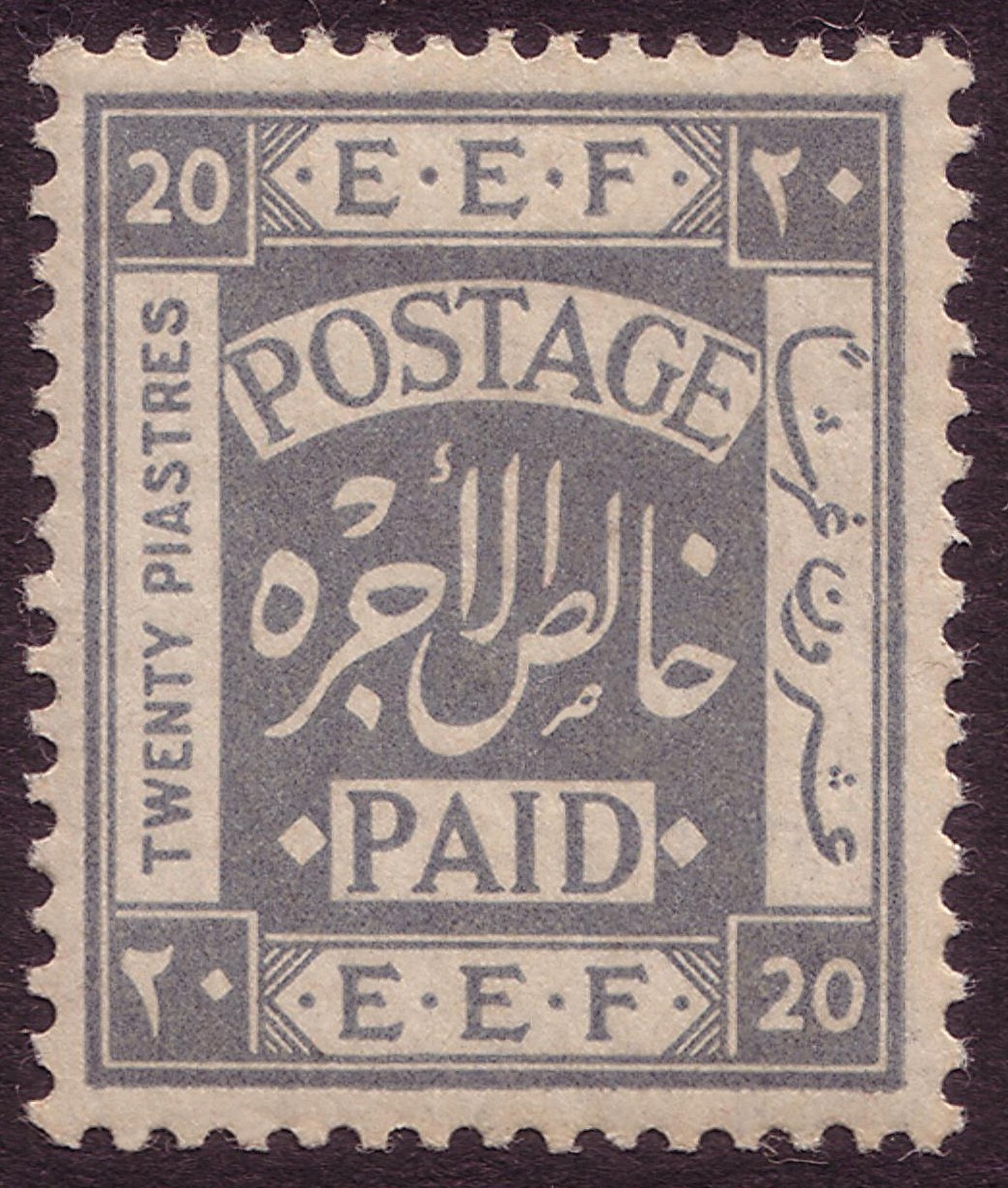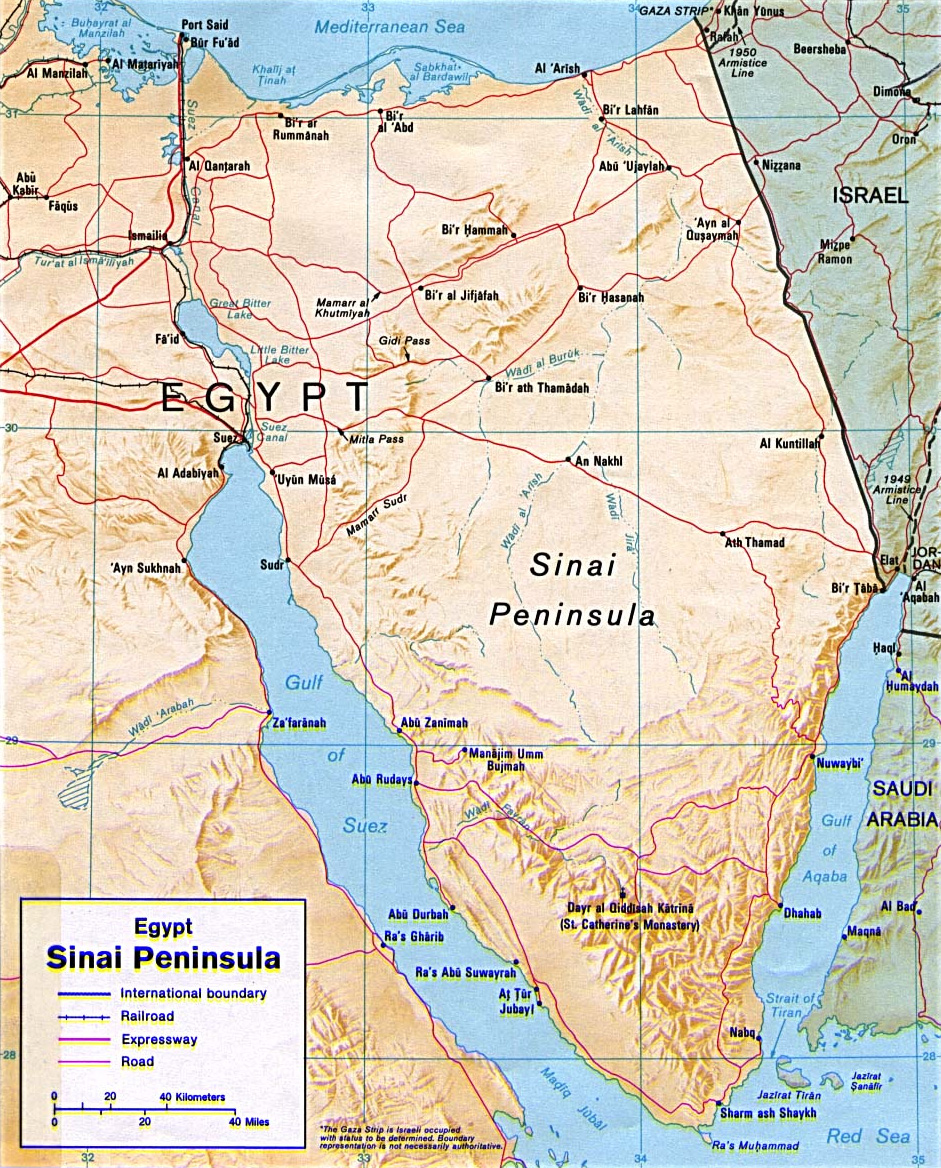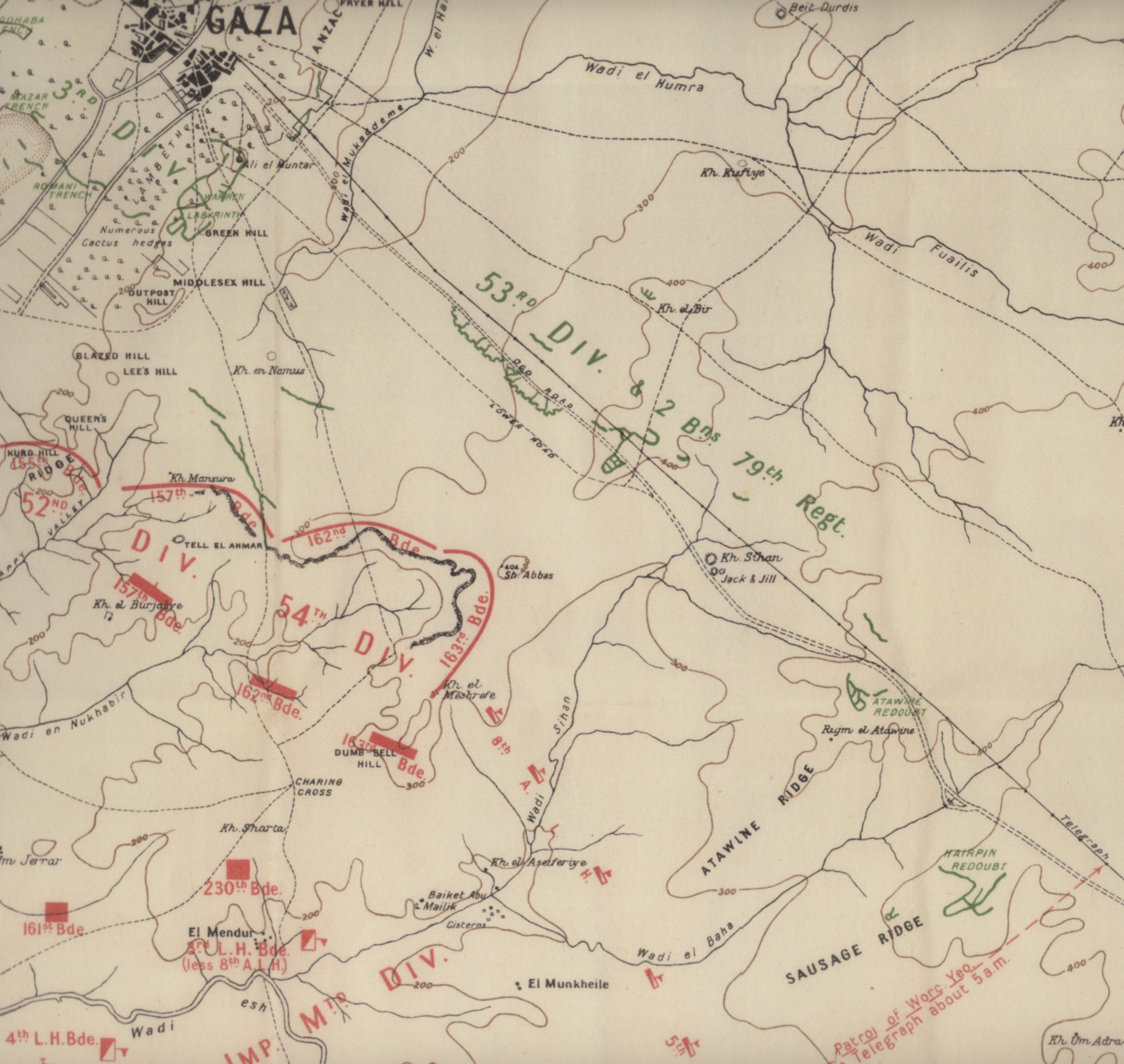|
Egyptian Expeditionary Force
The Egyptian Expeditionary Force (EEF) was a British Empire military formation, formed on 10 March 1916 under the command of General Archibald Murray from the Mediterranean Expeditionary Force and the Force in Egypt (1914–15), at the beginning of the Sinai and Palestine Campaign of the First World War. History Formed in the British protectorate of the Sultanate of Egypt, the initially small force was raised to guard the Suez Canal and Egypt. After the withdrawal from the Gallipoli Campaign the force grew into a large reserve to provide reinforcements for the Western Front (World War I), Western Front, while the Western Frontier Force fought in the Senussi Campaign from 1915 to 1917 and the Eastern Force (EF) defended the canal at the Battle of Romani in August 1916. Following the victory at Romani, part of the Eastern Force pursued the Ottoman Empire, Ottoman invading force back to Palestine (region), Palestine after the victories at the Battle of Magdhaba in December 1916 and t ... [...More Info...] [...Related Items...] OR: [Wikipedia] [Google] [Baidu] |
First World War
World War I (28 July 1914 11 November 1918), often abbreviated as WWI, was one of the deadliest global conflicts in history. Belligerents included much of Europe, the Russian Empire, the United States, and the Ottoman Empire, with fighting occurring throughout Europe, the Middle East, Africa, the Pacific, and parts of Asia. An estimated 9 million soldiers were killed in combat, plus another 23 million wounded, while 5 million civilians died as a result of military action, hunger, and disease. Millions more died in genocides within the Ottoman Empire and in the 1918 influenza pandemic, which was exacerbated by the movement of combatants during the war. Prior to 1914, the European great powers were divided between the Triple Entente (comprising France, Russia, and Britain) and the Triple Alliance (containing Germany, Austria-Hungary, and Italy). Tensions in the Balkans came to a head on 28 June 1914, following the assassination of Archduke Franz Ferdina ... [...More Info...] [...Related Items...] OR: [Wikipedia] [Google] [Baidu] |
Battle Of Romani
The Battle of Romani was the last ground attack of the Central Powers on the Suez Canal at the beginning of the Sinai and Palestine campaign during the First World War. The battle was fought between 3 and 5 August 1916 near the Egyptian town of Romani and the site of ancient Pelusium on the Sinai Peninsula, east of the Suez Canal. This victory by the 52nd (Lowland) Division and the Anzac Mounted Division of the Egyptian Expeditionary Force (EEF) over a joint Ottoman Empire, Ottoman and German Empire, German force, which had marched across the Sinai, marked the end of the Defence of the Suez Canal campaign, also known as the ''Offensive zur Eroberung des Suezkanals'' and the ''İkinci Kanal Harekâtı'', which had begun on 26 January 1915. This British Empire victory ensured the safety of the Suez Canal from ground attacks and ended the Central Powers' plans to disrupt traffic through the canal by gaining control of the strategically important northern approaches to it. The pur ... [...More Info...] [...Related Items...] OR: [Wikipedia] [Google] [Baidu] |
Battle Of Beersheba (1917)
The Battle of Beersheba ( tr, Birüssebi Muharebesi, ger, Schlacht von Birüssebi)The several battles fought for the Gaza to Beersheba line between 31 October and 7 November were all assigned the title Third Battle of Gaza, although they took place many miles apart, and were fought by different corps. [Battles Nomenclature Committee 1922 p. 32, Falls 1930 Vol. 2 Sketch Maps 1–9] was fought on 31 October 1917, when the British Empire's Egyptian Expeditionary Force (EEF) attacked and captured the Yildirim Army Group garrison at Beersheba, beginning the Southern Palestine Offensive of the Sinai and Palestine campaign of World War I. Infantry from the 60th (2/2nd London) Division, 60th (London) and the 74th (Yeomanry) Divisions of the XX Corps (United Kingdom), XX Corps from the southwest conducted limited attacks in the morning, then the Anzac Mounted Division (Desert Mounted Corps) launched a series of attacks against the strong defences which dominated the eastern side of Beers ... [...More Info...] [...Related Items...] OR: [Wikipedia] [Google] [Baidu] |
Desert Mounted Corps
The Desert Mounted Corps was an army corps of the British Army during the First World War, of three mounted divisions renamed in August 1917 by General Edmund Allenby, from Desert Column. These divisions which served in the Sinai and Palestine Campaign had been formed by Australian light horse, British yeomanry, and New Zealand mounted rifles brigades, supported by horse artillery, infantry and support troops. They were later joined by Indian cavalry and a small French cavalry detachment. The Desert Mounted Corps (DMC) comprised the ANZAC Mounted Division, the Australian Mounted Division and the Yeomanry Mounted Division, with infantry formations attached when required, as had Desert Column. In the first month of its existence, the corps continued training and patrolling no man's land preparing for manoeuvre warfare. Their first operations would be the attack, along with the XX Corps of the Battle of Beersheba. Having captured their objective they were involved in a series ... [...More Info...] [...Related Items...] OR: [Wikipedia] [Google] [Baidu] |
XXI Corps (United Kingdom)
The XXI Corps was an Army Corps of the British Army during World War I. The Corps was formed in Palestine in August 1917 under the command of Lieutenant General Edward Bulfin.Woodward, p 100 It formed part of the Egyptian Expeditionary Force (EEF) and served in the Sinai and Palestine Campaign. At the Battle of Sharon it fought what has been described as 'one of the most overwhelmingly successful operations of the war' and 'a precursor to the modern ''Blitzkrieg''.' It then carried out remarkable march up the coast of modern-day Lebanon as the war came to an end. Origin When General Sir Edmund Allenby took over command of the Egyptian Expeditionary Force (EEF) in Palestine in the Summer of 1917 he completely reorganised it. XXI Corps Headquarters was formed on 12 August at Deir al-Balah to take responsibility for the left section of the EEF's line in front of Gaza City, including 52nd (Lowland), 54th (East Anglian) and 75th Divisions and three brigades of heavy artillery. It ... [...More Info...] [...Related Items...] OR: [Wikipedia] [Google] [Baidu] |
XX Corps (United Kingdom)
The XX Corps was an army corps of the British Army during World War I. First World War The Corps was formed in Palestine in June 1917 under Lieutenant General Philip Chetwode. Following the British failure in the Second Battle of Gaza, the Egyptian Expeditionary Force underwent a major rearrangement with the appointment of General Edmund Allenby as the new Commander-in-Chief. The infantry component of the force was divided into two corps; XX Corps and XXI Corps. The corps initially comprised four infantry divisions:Grainger (2006), pp. 239–240 * 10th (Irish) Division * 53rd (Welsh) Division * 60th (2/2nd London) Division * 74th (Yeomanry) Division The XX Corps first saw action in the Beersheba phase of the Third Battle of Gaza on 31 October 1917. The 60th and 74th Divisions captured Turkish outposts west of the town but were not involved in the final assault. Following Beersheba on 6 November, the corps made a frontal assault against the Turkish fortifications in t ... [...More Info...] [...Related Items...] OR: [Wikipedia] [Google] [Baidu] |
Manoeuvre Warfare
Maneuver warfare, or manoeuvre warfare, is a military strategy which seeks to shatter the enemy's overall cohesion and will to fight. Background Maneuver warfare, the use of initiative, originality and the unexpected, combined with a ruthless determination to succeed, seeks to avoid opponents' strengths while exploiting their weaknesses and attacking their critical vulnerabilities and is the conceptual opposite of attrition warfare. Rather than seeking victory by applying superior force and mass to achieve physical destruction, maneuver uses preemption, deception, dislocation, and disruption to destroy the enemy's will and ability to fight. Historically, maneuver warfare was stressed by small militaries, the more cohesive, better trained, or more technologically advanced than attrition warfare counterparts. The term "tactical maneuver" is used by maneuver warfare theorists to refer to movement by forces to gain "advantageous position relative to the enemy," as opposed to ... [...More Info...] [...Related Items...] OR: [Wikipedia] [Google] [Baidu] |
Stalemate In Southern Palestine
The Stalemate in Southern Palestine was a six month standoff between the British Egyptian Expeditionary Force (EEF) and the Ottoman Army in World War I. The two hostile forces faced each other along the Gaza to Beersheba line during the Sinai and Palestine Campaign, with neither side able to force its opponent to withdraw. The stalemate began in April 1917 with the defeat of the EEF by the Ottoman Army at the Second Battle of Gaza and lasted until the EEF offensive began with the Battle of Beersheba on 31 October 1917. Previous to the stalemate, units of the Ottoman Fourth Army had been forced out of the Sinai Peninsula by a series of EEF victories: the Battle of Romani in August 1916, the Battle of Magdhaba in December and the Battle of Rafa in January 1917. The EEF followed up those victories by making two unsuccessful attempts to capture Gaza: the First Battle of Gaza in March, and the Second Battle of Gaza in April. These two Ottoman victories halted the attempted EEF invas ... [...More Info...] [...Related Items...] OR: [Wikipedia] [Google] [Baidu] |
Second Battle Of Gaza
The Second Battle of Gaza was fought on 17-19 April 1917, following the defeat of the Egyptian Expeditionary Force (EEF) at the First Battle of Gaza in March, during the Sinai and Palestine Campaign of the First World War. Gaza was defended by the strongly entrenched Ottoman Army garrison, which had been reinforced after the first battle by substantial forces. They manned the town's defences and a line of strong redoubts which extended eastwards along the road from Gaza to Beersheba. The defenders were attacked by the Eastern Force's three infantry divisions, supported by two mounted divisions, but the strength of the defenders, their entrenchments & supporting artillery decimated the attackers. As a result of the EEF victories at the Battle of Romani, the Battle of Magdhaba, and the Battle of Rafa, fought from August 1916 to January 1917, the EEF had pushed the defeated Ottoman Army eastwards. The EEF reoccupied the Egyptian territory of the Sinai Peninsula and crossed over int ... [...More Info...] [...Related Items...] OR: [Wikipedia] [Google] [Baidu] |
First Battle Of Gaza
The First Battle of Gaza was fought on 26 March 1917 during the first attempt by the Egyptian Expeditionary Force (EEF), which was a British Empire military formation, formed on 10 March 1916 under the command of General Archibald Murray from the Mediterranean Expeditionary Force and the Force in Egypt (1914–15), at the beginning of the Sinai and Palestine Campaign of the First World War. Fighting took place in and around the town of Gaza on the Mediterranean coast when infantry and mounted infantry from the Desert Column, a component of the Eastern Force, attacked the town. Late in the afternoon, on the verge of capturing Gaza, the Desert Column was withdrawn due to concerns about the approaching darkness and large Ottoman reinforcements. This British defeat was followed a few weeks later by the even more emphatic defeat of the Eastern Force at the Second Battle of Gaza in April 1917. In August 1916, the EEF victory at Romani ended the possibility of land-based attacks on th ... [...More Info...] [...Related Items...] OR: [Wikipedia] [Google] [Baidu] |
Desert Column
The Desert Column was a First World War British Empire army corps which operated in the Sinai and Palestine Campaign from 22 December 1916.There is no war diary for Desert Column for December. See The Column was commanded by Lieutenant General Philip W. Chetwode and formed part of Eastern Force. When Chetwode took command of Eastern Force after the Second Battle of Gaza, Harry Chauvel took command and oversaw the expansion of the column to three divisions. Chetwode was appointed on 7 December 1916 to command the Column which was composed of the 42nd (East Lancashire) Division, the 52nd (Lowland) Division, the Anzac Mounted Division and the Imperial Camel Brigade's eighteen companies, six of which were yeomen. These divisions had been involved in the Battle of Romani in August 1916 and had advanced across the Sinai Peninsula. Chetwode arrived at El Arish to take up his appointment on 22 December 1916. The Battle of Magdhaba was won the next day, and on 9 January 1917 the Battle ... [...More Info...] [...Related Items...] OR: [Wikipedia] [Google] [Baidu] |
Battle Of Rafa
The Battle of Rafa, also known as the Action of Rafah, fought on 9 January 1917, was the third and final battle to complete the recapture of the Sinai Peninsula by British forces during the Sinai and Palestine campaign of the First World War. The Desert Column of the Egyptian Expeditionary Force (EEF) attacked an entrenched Ottoman Army garrison at El Magruntein to the south of Rafah, close to the frontier between the Sultanate of Egypt and the Ottoman Empire, to the north and east of Sheikh Zowaiid. The attack marked the beginning of fighting in the Ottoman territory of Palestine. After the British Empire victories at the Battle of Romani in August 1916 and the Battle of Magdhaba in December, the Ottoman Army had been forced back to the southern edge of Palestine as the EEF pushed eastwards supported by extended lines of communication. This advance depended on the construction of a railway and a water pipeline. With the railway reaching El Arish on 4 January 1917, an attack o ... [...More Info...] [...Related Items...] OR: [Wikipedia] [Google] [Baidu] |







